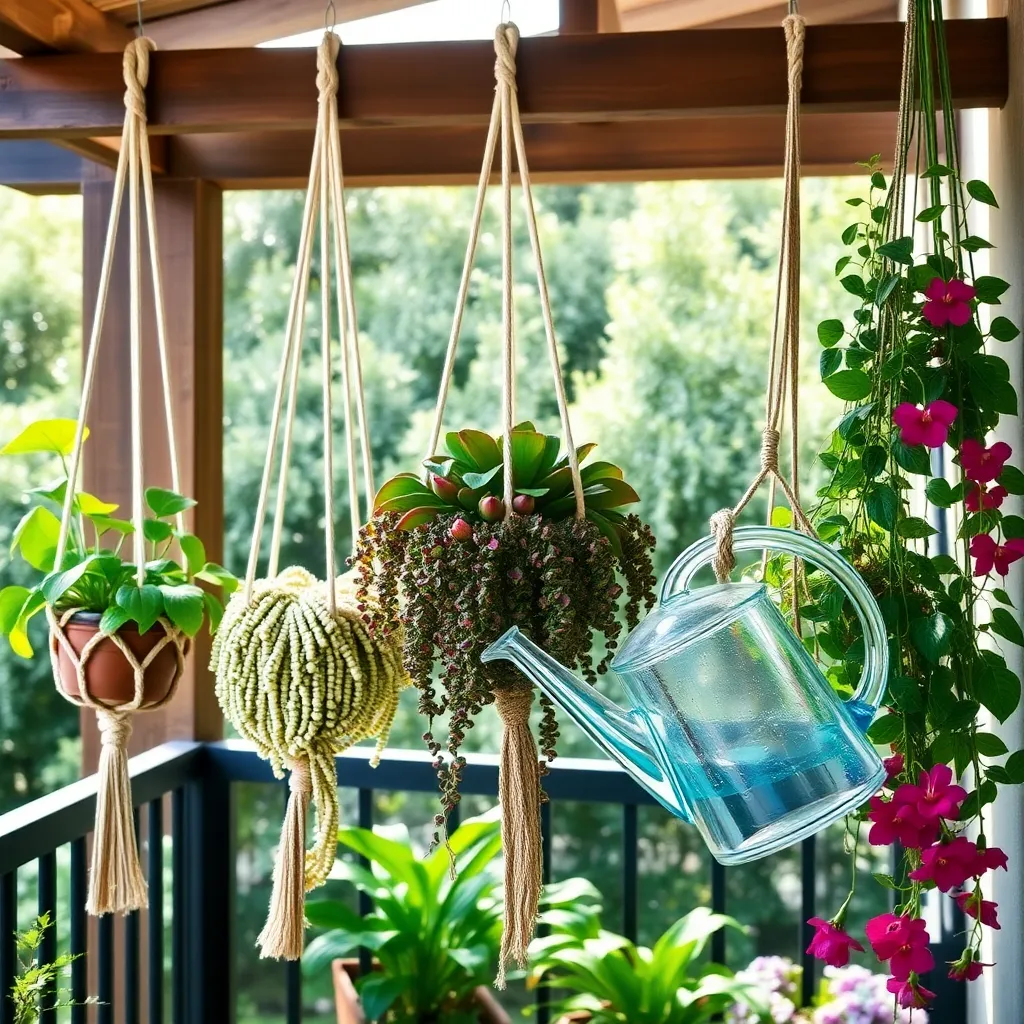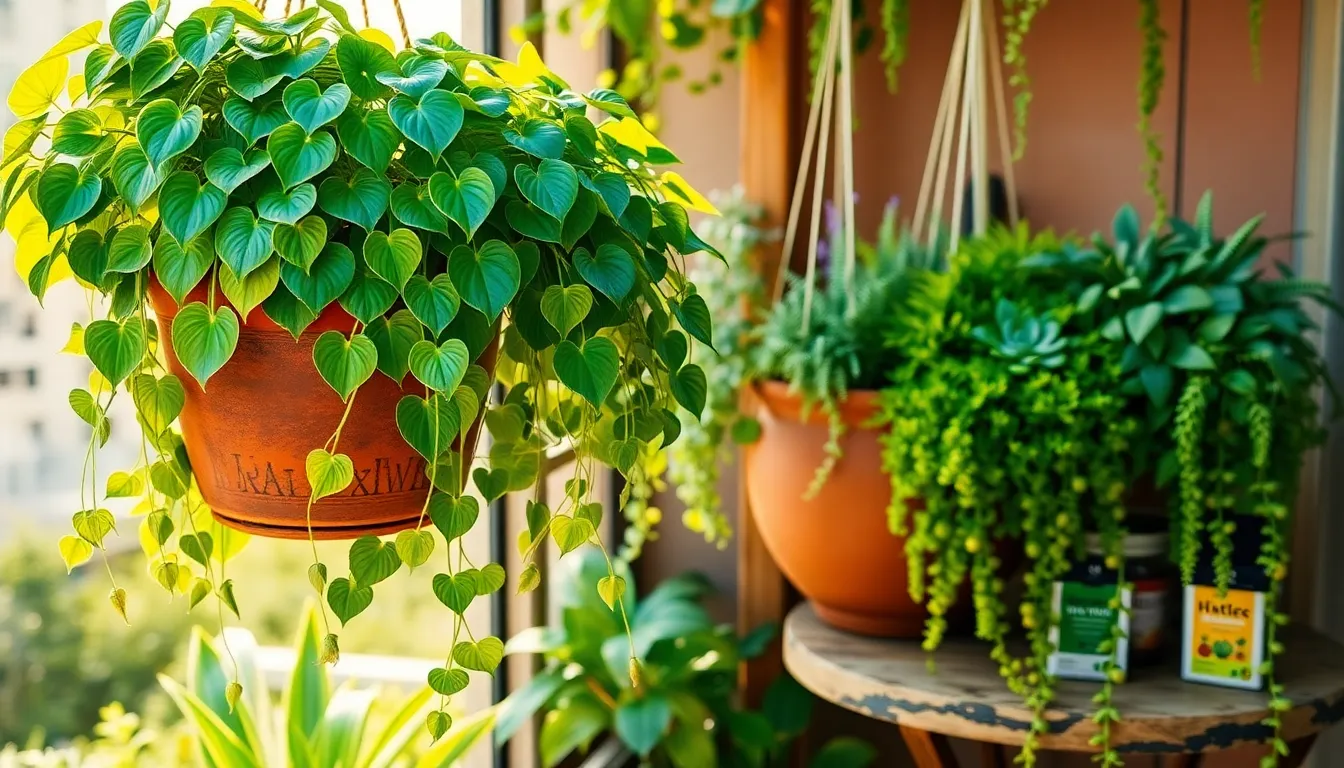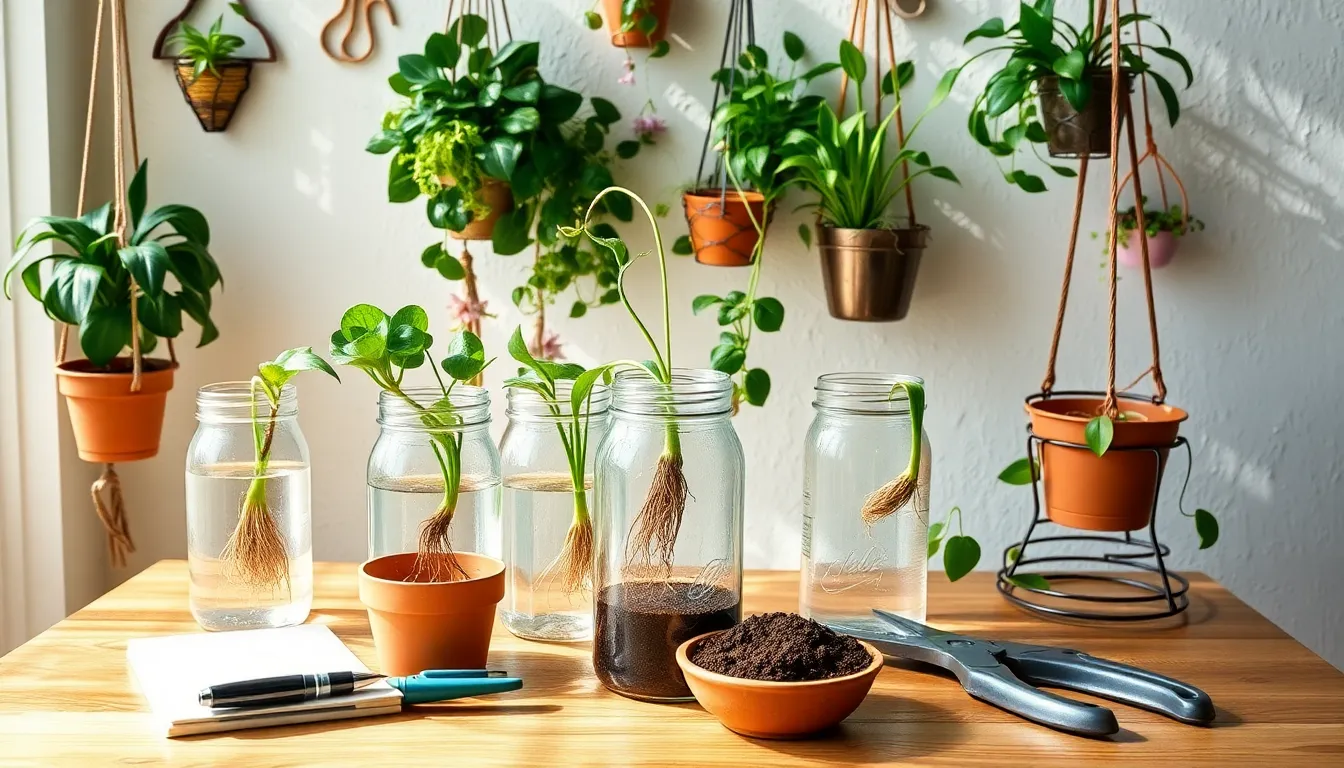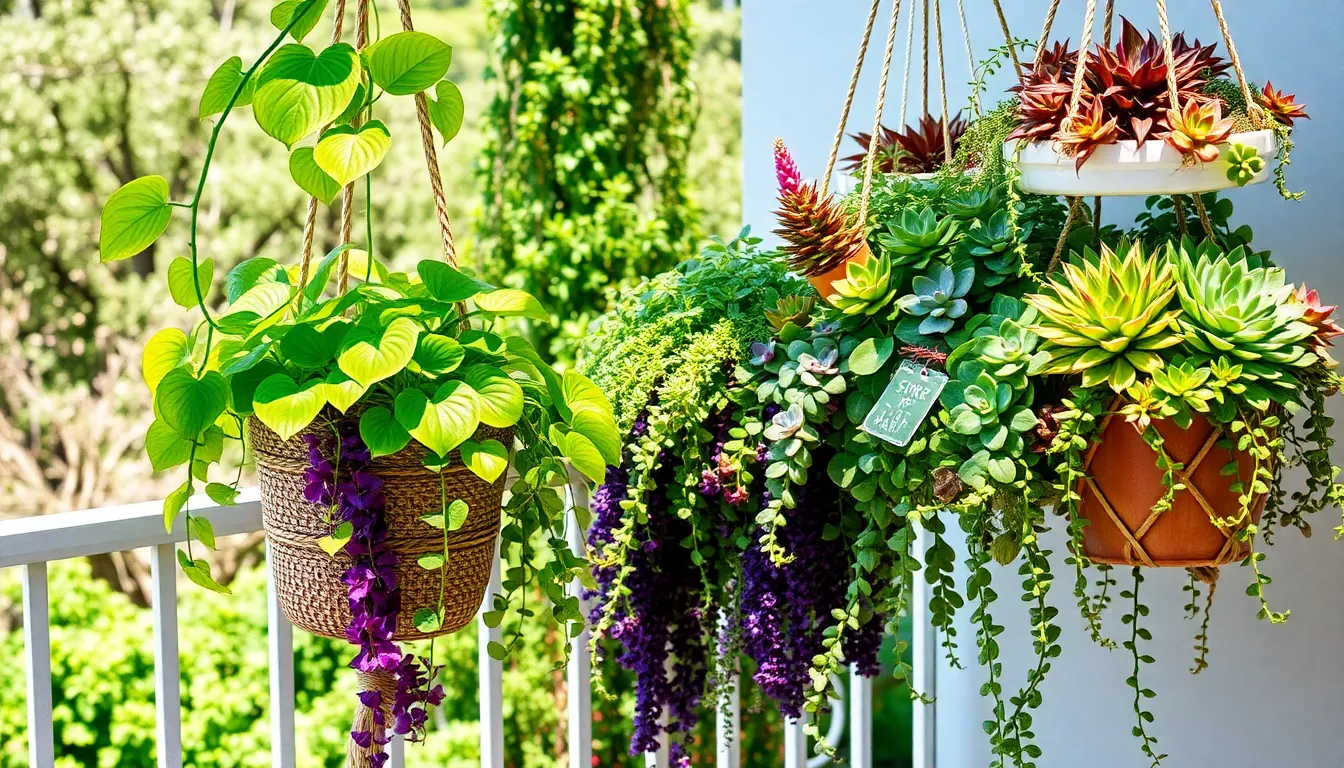Hanging plants bring an enchanting touch of nature to our homes, transforming even the simplest of spaces into lush, inviting sanctuaries. Whether you’re a novice gardener or have years of experience nurturing greenery, understanding the nuances of watering your suspended botanicals is crucial for their thriving vitality.
The art of watering hanging plants is more than just quenching their thirst; it’s about fostering an environment where they can flourish. In this article, we’ll explore the ideal moments to water these beauties and the techniques that ensure their health and vibrancy.
You’ll discover how to read the subtle signs of thirst your plants exhibit and learn practical tips that demystify the watering process. From selecting the right tools to mastering the perfect watering schedule, we’ll guide you through each step with warmth and clarity.
Assess Plant Moisture Needs
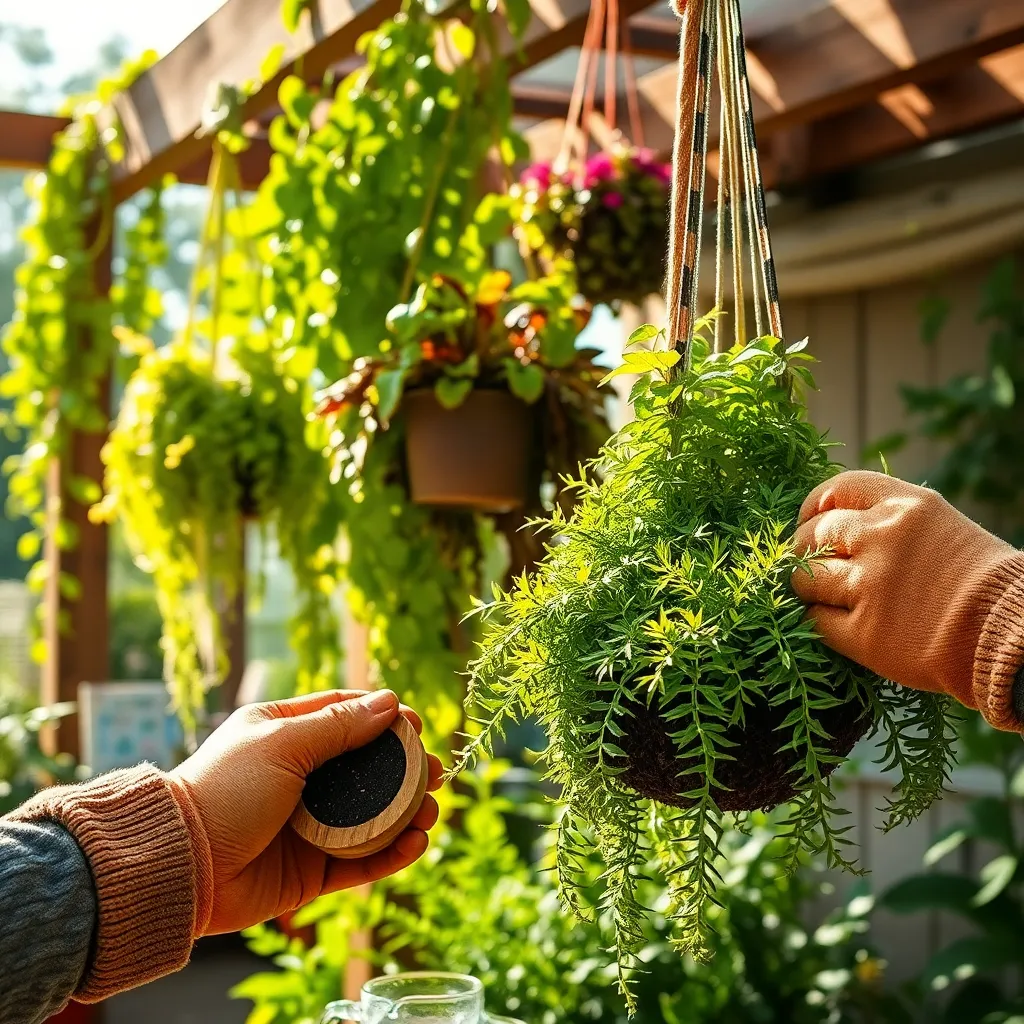
Understanding your hanging plants’ moisture needs is crucial for their health and vitality. Start by considering the type of plant you have, as some species prefer consistently moist soil while others thrive in drier conditions.
To assess moisture needs accurately, perform the finger test by inserting your finger about an inch into the soil. If the soil feels dry at that depth, it’s time to water; if it’s still moist, wait a few more days.
Another effective technique is to lift the plant slightly; a lightweight pot often indicates a need for watering. Be cautious with plants like succulents, which store water in their leaves and prefer to dry out between waterings.
For advanced gardeners, consider using a moisture meter for more precise readings, especially if your hanging plants are in hard-to-reach places. This tool helps you avoid over-watering, which is a common mistake that can lead to root rot.
Choose Optimal Watering Time
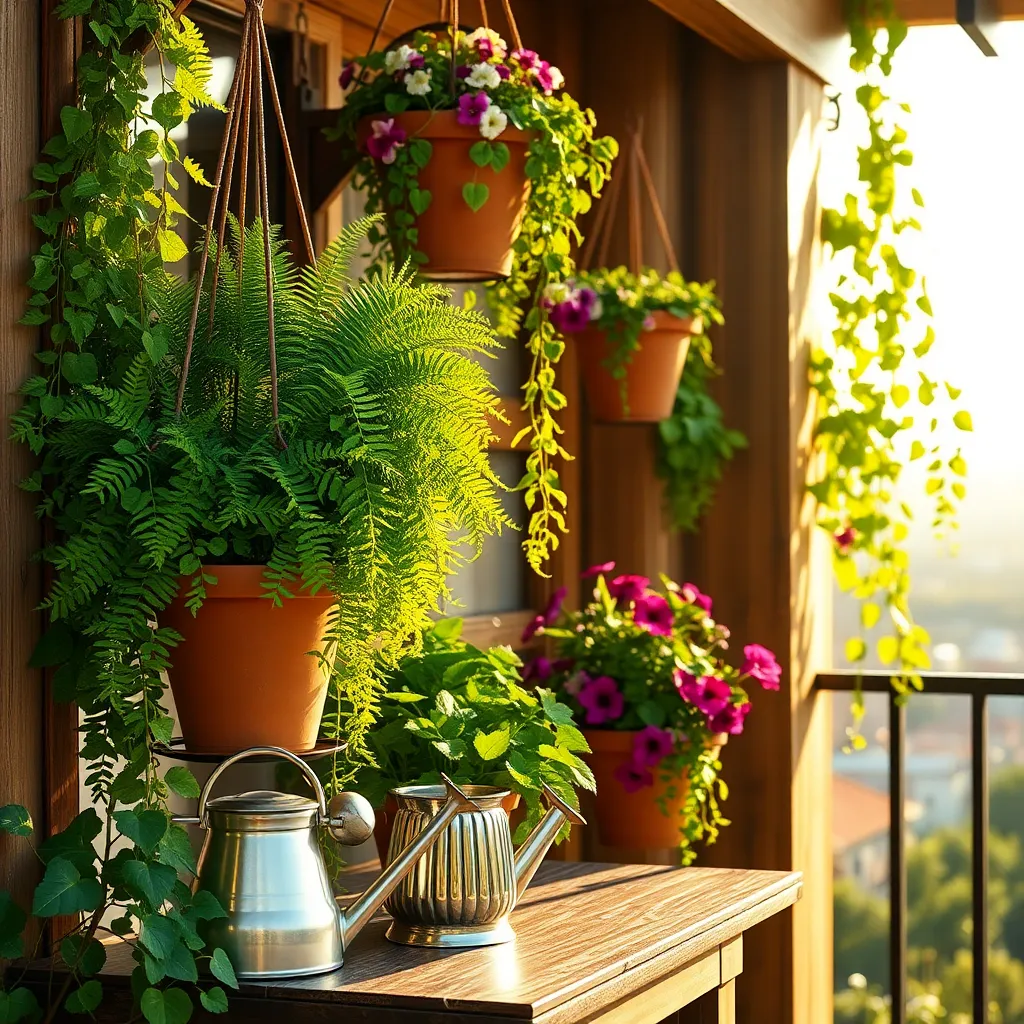
Choosing the optimal time to water your hanging plants can significantly impact their health and growth. The best time to water is typically in the morning, as it allows the plants to absorb moisture before the heat of the day.
Watering in the morning helps prevent fungal diseases that can occur if the foliage remains wet overnight. Early watering also ensures that the plants have adequate moisture to cope with the rising temperatures throughout the day.
In extremely hot climates, you might need to water again in the late afternoon or early evening. However, make sure that the foliage has time to dry before nightfall to prevent any potential fungal issues.
For beginners, a simple rule of thumb is to check the soil moisture by sticking your finger about an inch into the soil. If it feels dry, it’s time to water, but if it’s still moist, hold off and check again the next day.
Advanced gardeners can make use of a moisture meter to get more precise readings, ensuring that the plants receive the exact amount of water they need. Consistent monitoring and adjusting based on the weather and plant type will make your hanging plants thrive.
Select Proper Watering Tools
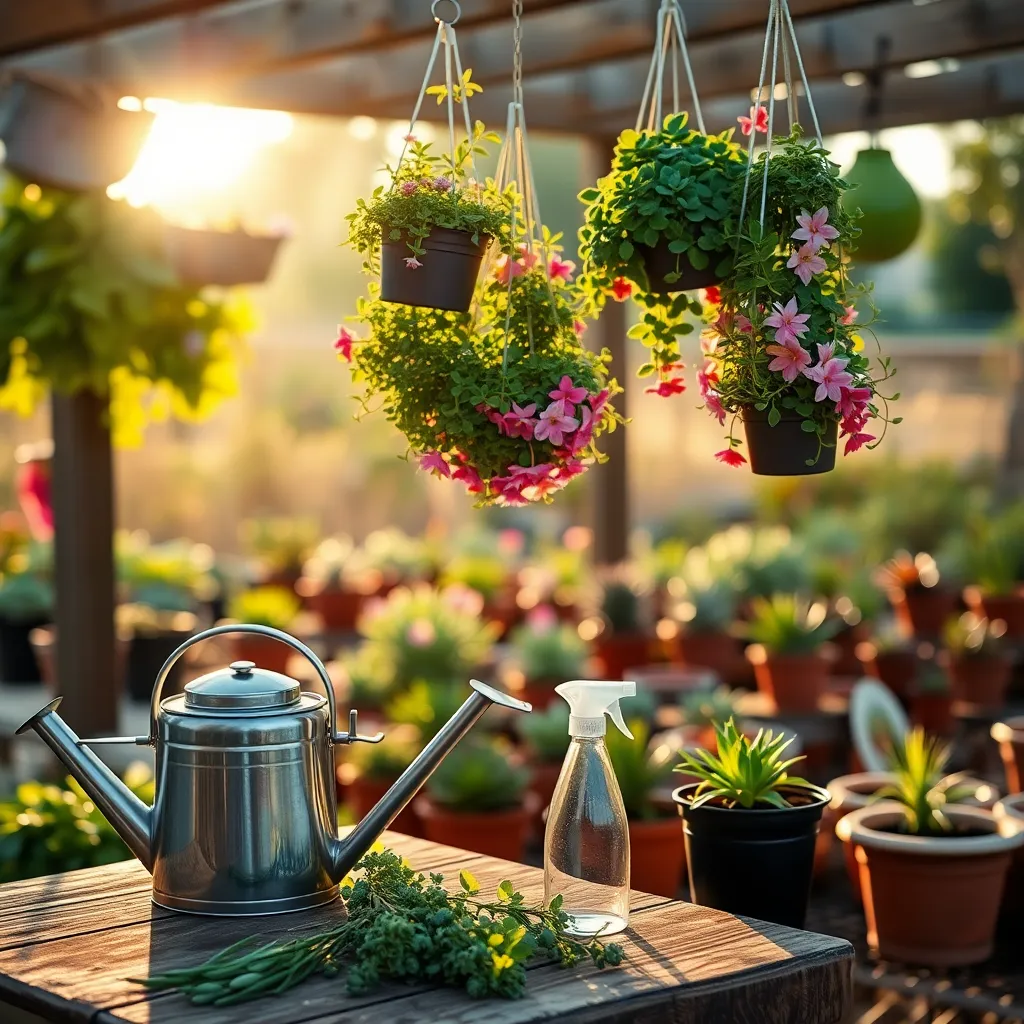
Choosing the right watering tools is crucial for maintaining the health of your hanging plants. A good starting point is to use a watering can with a long spout, which allows you to reach high-hanging pots with ease and precision.
For those who have several hanging plants, investing in a hose attachment with a gentle spray nozzle can save time and effort. Look for an adjustable nozzle that provides a fine mist, as this helps to avoid disturbing the soil and roots while ensuring even coverage.
Consider using a self-watering globes or spikes if you’re often away from home, as these tools can maintain moisture levels for extended periods. Such devices are especially beneficial for plants in direct sunlight that tend to dry out faster, ensuring they receive a consistent water supply.
Advanced gardeners might explore drip irrigation systems tailored for hanging plants, which offer precise control over watering frequency and quantity. These systems can be set up to target the root zone directly, minimizing water waste and promoting optimal plant health.
Apply Water Evenly and Gently

When watering hanging plants, it is crucial to apply water evenly and gently to prevent soil erosion and damage to delicate roots. Using a watering can with a long spout or a hose with a fine spray nozzle can help distribute water evenly across the soil surface.
Avoid using a strong stream of water, as it can displace soil and expose roots, which may harm the plant. Instead, aim to water slowly, allowing the soil to absorb moisture gradually and thoroughly.
For beginners, it’s helpful to water until you see excess water draining from the bottom of the hanging pot. This ensures that the entire root system receives adequate moisture without overwatering.
Experienced gardeners might use self-watering pots or drip irrigation systems to maintain consistent soil moisture levels. These systems can be set to deliver water at a slow, steady pace, perfect for maintaining hanging plants in peak condition.
Ensure Proper Drainage and Airflow

Proper drainage and airflow are crucial for the health of your hanging plants, as they prevent waterlogging and root rot. Ensure your containers have adequate drainage holes to allow excess water to escape easily, which is vital for maintaining healthy roots.
Choosing the right soil mix is also essential; opt for a lightweight, well-draining potting mix specifically designed for container plants. Avoid garden soil as it can compact easily and hinder both drainage and root development.
Position your hanging plants in locations where they receive ample air circulation, as this helps dry out any excess moisture and prevents fungal diseases. If you notice stagnant air around your plants, consider placing a fan nearby to encourage airflow, especially in enclosed spaces.
For advanced gardeners, consider incorporating materials like perlite or vermiculite into your soil mix to enhance drainage further. These amendments improve soil aeration and help retain moisture without waterlogging, benefiting your plants significantly.
Conclusion: Growing Success with These Plants
In nurturing the delicate balance of your hanging plants, we’ve explored five core relationship concepts that can enrich your connections: understanding the unique needs of your partner (or plant), the importance of consistent care and attention, recognizing when to give space, adapting to changing conditions, and the power of patience and persistence. Just as plants thrive when tended to with love and understanding, so do relationships flourish when we apply these principles.
Now, take a moment to reflect on one relationship in your life that could benefit from this newfound insight. Commit to one small, actionable step today—perhaps a thoughtful gesture, a listening ear, or simply a moment to truly see and appreciate your partner’s needs.
Bookmark this article as a valuable resource and revisit it whenever you need guidance on nurturing your relationships. As you continue to apply these insights, watch as your connections grow stronger and more resilient. Remember, every relationship is an opportunity for growth and joy. By investing time and care, you are cultivating a future filled with love and harmony. Let’s nurture these bonds together, for a thriving tomorrow.

